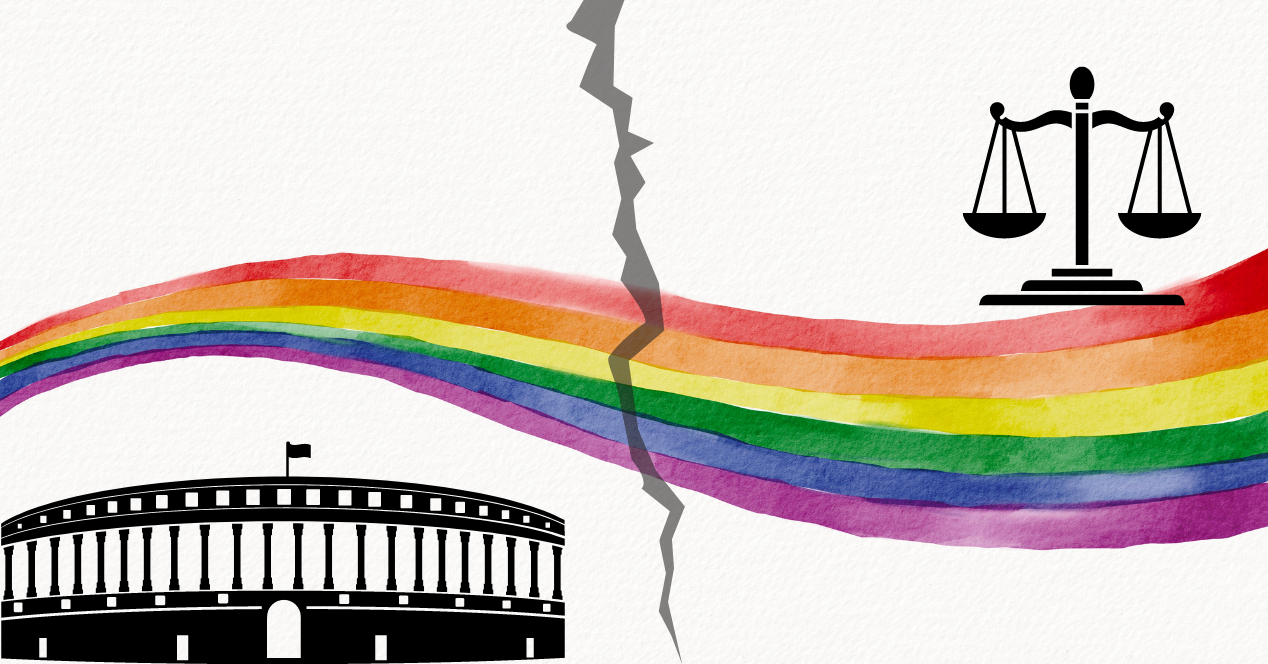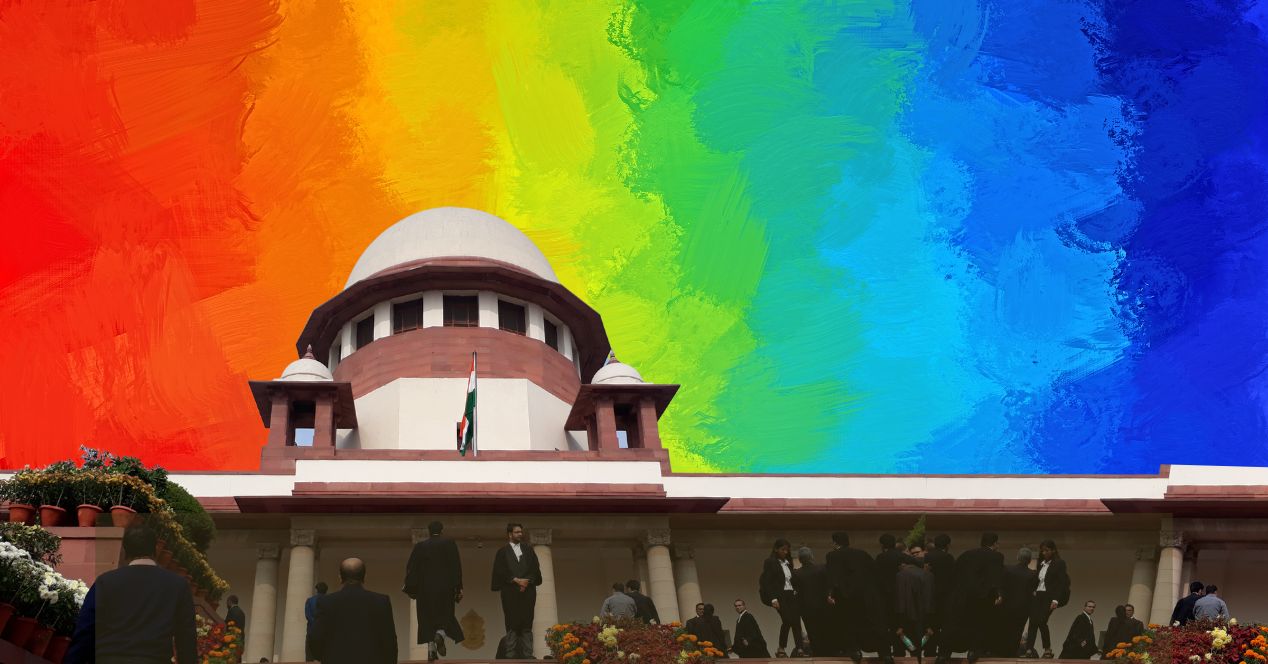Analysis
Shilpa Sailesh Judgment: A Step Towards No-Fault Divorce?
Is the SC's power to directly grant divorce in cases of irretrievable breakdown of marriage, a judicial quick fix to a legislative issue?

Earlier in May, a Constitutional bench led by Justice Sanjay Kishan Kaul in Shilpa Sailesh v Varun Sreenivasan (Shilpa Sailesh) held that the Supreme Court (SC) could dissolve a marriage that had irretrievably broken down using Article 142. This provision, unique to the Indian Constitution, allows the SC to do ‘complete justice’ in ‘any cause or matter’ before it. It is an extraordinary power that allows the courts to transcend the bounds of procedural and substantive law to ensure just and fair outcomes in any matter.
In doing so, the SC firmly entrenched the place of no-fault divorce in the Indian landscape of marriage and divorce laws. However, the idea of irretrievable breakdown itself is hardly new. It is worth noting that the SC has used Article 142 to dissolve marriages since as early as 1996. What then is the novel contribution of the Shilpa Sailesh judgement?
Moving Away from Fault Theory
The majority of Indian family laws subscribe to a fault-based theory of divorce. That is, divorce is granted if a spouse is able to prove that the marriage had suffered due to a ‘fault’ or matrimonial offence committed by the other party. Such a matrimonial offence could be cruelty, desertion, adultery, conversion to another religion etc. A substantial chunk of divorce cases are filed under these provisions.
The problems with a fault-based theory though are immediately obvious. First, it creates an adversarial atmosphere to deal with emotionally charged matters. It encourages parties to reveal extremely personal details in a court of law. Often, these matters drag on for years, weighed down by allegations and counter-allegations between the parties.
To ease the process of divorce, Parliament introduced mutual consent divorce under the Hindu Marriage Act in 1976. As the name suggests, both parties must agree for the divorce to take place. Moreover, under section 13(1A)(i), a party can file for divorce if the couple has not resumed living together after a year of a court passing decree on restitution of conjugal rights. This could be filed by the person against whom the restitution order was passed as well. In this manner, the Parliament has been trying to simplify the process of divorce since the mid 70s.
However, at the moment, there is still no provision where a party can unilaterally file a petition seeking divorce on the ground that the marriage has broken down beyond repair, despite no party being at ‘fault’. A no-fault ground would radically simplify the process of divorce by removing the requirement of producing lengthy, complicated evidence on matrimonial fault.
Interestingly, the Law Commission of India had recommended introducing a no-fault ground as early as 1978 and later repeated the recommendation in 2009. It reasoned that where the marriage had completely broken down, there was no reason for denying divorce. In such situations, it was in public interest to allow parties to get on with their lives by ending the marriage amicably. To activate such a ground it would be necessary to show that the parties had been living apart for a sufficient time period and reconciliation was impossible.
Judicial Incoherence
However, despite these recommendations, due to legislative inaction, the judiciary has stepped in from time to time to grant divorce on the ground of irretrievable breakdown under Article 142. In such situations, usually, both parties are agreeable to the divorce and the Court comes to the conclusion that there is no possibility of reconciliation and the marriage is emotionally and practically dead. The SC grants divorce after ensuring that adequate financial arrangements have been made for the wife and children.
Even where the Court does not exercise its power under Article 142, the concept of ‘irretrievable breakdown’ itself has become an intrinsic part of the judicial vocabulary and is relied on to strengthen the arguments made under existing legislative grounds like cruelty.
The case that paved the way for this was the 1993 SC decision in V. Bhagat v D. Bhagat. In this case, the couple made multiple allegations of adultery, cruelty and insanity against each other. The SC expanded the understanding of cruelty to include mental cruelty and observed that such cruelty could be either intentional or unintentional. Absence of intention would not nullify acts of cruelty within a marriage. Significantly, it noted that though irretrievable breakdown of marriage was not a ground for divorce, specific circumstances that showed that the marriage had irretrievably broken down would have to be kept in mind while ascertaining the type of cruelty within the marriage.
Using this approach, in Naveen Kohli v Neelu Kolhi, the SC observed that given that the parties had been living separately for more than a decade and had filed many civil and criminal proceedings against each other, it appeared that there was little substance and goodwill left in the marriage and therefore wisdom lay in dissolving the same. Here, the Court recommended that the legislature should consider introducing ‘irretrievable breakdown’ as a separate ground of divorce. However, it did not in fact grant divorce under Article 142 of the Constitution. Instead, it relied on an expansive reading of cruelty as a ground for divorce.
While these decisions have taken a positive view of the concept of irretrievable breakdown and its place within marital adjudication, many other decisions have expressed doubt about its liberal invocation. In Savitri Pandey v Prem Chand Pandey (2002), the Court observed that a marriage could not be dissolved based solely on the arguments made by one of the parties. Similarly, in Neelam Kumar v Dayarani (2010) the Supreme Court refused to dissolve the marriage on grounds of irretrievable breakdown because it felt that doing so would be rewarding the party that had, by their very own conduct, caused the marriage to break down. It noted that reading such a ground into the Hindu Marriage Act, 1955 would amount to judicial transgression.
The Salience of the Shilpa Sailesh Judgement
The need to bring some clarity to the body of divergent, contradictory case-laws on irretrievable breakdown as a ground for dissolution of marriage, is what necessitated a decision like Shilpa Sailesh.
The Constitution Bench in Shilpa Sailesh clarified the contours of the SC’s power under Article 142. It held that the Supreme Court could grant unilateral divorce if it was convinced that the marriage had become “totally unworkable, emotionally dead and beyond salvation and dissolution was the only way forward.” In such a scenario, the fault theory of divorce would not stand in the way of the court.
Another major contribution of Sailesh, was that it specified the factors to be taken into consideration before granting divorce under Article 142. This includes, the length of time the couple cohabited, nature of allegations, attempts at reconciliation, period of separation (anything more than 6 years would definitely qualify, the court observed). While this is not a straight jacket formula, these factors provide much needed guidelines to exercise judicial discretion. In addition, the Court would also have to ensure adequate alimony for the wife and dependents before granting divorce under Article 142.
Finally, given that the powers under Article 142 were not a matter of right but discretion, parties could not approach the Supreme Court directly to dissolve the marriage. Rather, it would have to approach the Family Court as the court of first instance.
The contribution of Shilpa Sailesh is that it has clarified once and for all the powers of the SC to dissolve a marriage that has irretrievably broken down under Article 142. Moreover, it provides a clear pathway to parties whose cases have been languishing in the judicial docket for years. Finally, this Judgement will give confidence to judges in lower courts to make factual determinations on whether a marriage has in fact irretrievably broken down; without having to worry about whether doing so would be a judicial overstep.
However, the Judgement by itself is unlikely to usher in a regime of simplified, hassle free divorce. This is because the final authority with the right to dissolve marriages on such a ground lies exclusively with the apex court. Thus, practically, it is unlikely to make divorce procedurally easy or even less time consuming. A divorce petition will still have to go through multiple rounds of litigation before it even reaches the Supreme Court.
This demonstrates the limitations of a judicial approach to a fundamentally legislative problem. In this context, it might be worth revisiting the 71st Law Commission report which provided a clear legislative solution to this quagmire. It proposed an amendment to the Hindu Marriage Act, introducing irretrievable breakdown as a separate provision, much like mutual consent divorce. The provision is well-drafted as much as it is clear and coherent (it requires the petitioner to only prove that the parties have been residing separately for a continuous period of three years to be able to file for divorce under this ground) while also providing adequate safeguards (for instance, the wife’s special right to oppose a decree on the ground of irretrievable breakdown if it causes her ‘grave financial hardship’).
To reform the legal landscape of marriage and divorce then, we need to move beyond quick judicial quick fixes and explore more long-term legislative solutions.




